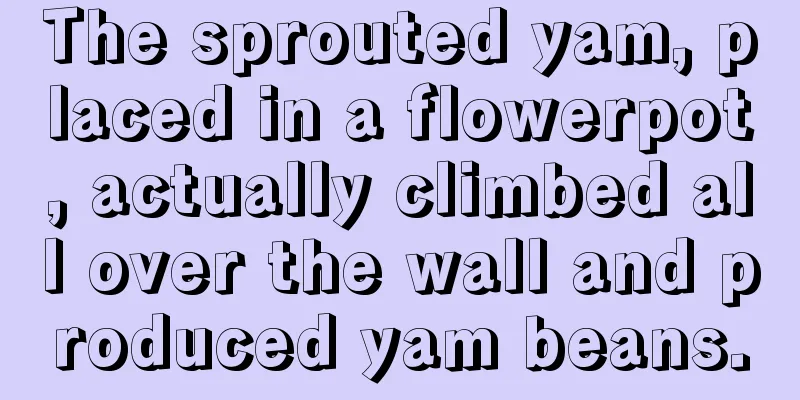Cultivation methods and precautions of Echinacea

|
Echinacea, also known as purple coneflower and Echinacea purpurea, is a wild chrysanthemum . It is named because its shape is a bit like pine cones. The flowering period is generally from June to July. When it blooms, the flowers are large and brightly colored, with high ornamental value, and are loved by many friends. Below, the editor will introduce the cultivation methods and precautions of Echinacea, let’s take a look. 1. Environment Echinacea likes light and warm environment. It is slightly cold-resistant and drought-resistant, but not waterlogged or high-temperature resistant. It is not demanding on soil, but grows well in deep, fertile and rich humus soil. It has large flowers and bright colors. 2. Soil Echinacea can be planted under high sunlight conditions and is not very demanding on the soil. For potted plants , you can choose general nutrient soil, or use 5 parts of peat soil, 3 parts of leaf mold, and 2 parts of perlite , mix well and plant. Then add sufficient base fertilizer when potting. 3. Water and fertilizer During the growth period of echinacea , apply sufficient nitrogen, phosphorus and potassium fertilizers to promote growth. After budding, phosphorus and potassium fertilizers promote flower growth. Do not apply too much water, keep the soil moist, and when the rainy season occurs, the air humidity needs to be controlled when watering to avoid root stagnation. Control moisture in winter. 4. Temperature Echinacea likes sunlight and cannot withstand heat. It should be shaded in summer and potted in a ventilated place. In winter, move to a sunny place indoors. The minimum temperature should not be lower than 10 degrees. Keep warm. 5. Lighting The natural flowering period of Echinacea is from May to September. If the environment is suitable with sufficient fertilizer and water, it can continue to bloom until October. If you want the Echinacea to grow strong and bloom more, you should pay attention to maintaining sufficient light. If there is insufficient light, the Echinacea will bloom less. 6. Pruning Echinacea will produce seeds, and the production of seeds requires a lot of nutrients. Echinacea will not have enough nutrients to continue blooming, so when the flowers of echinacea fade, the withered flowers should be trimmed in time. 7. Pest and disease control Echinacea is prone to wilt disease, which manifests itself as rotting at the rhizome first and then causing the entire plant to wither. Wilt disease is mostly caused by infection during transplanting, or it may be caused by underground pests gnawing on the roots. Therefore, when transplanting, it is recommended to irrigate the roots once with carbendazim or mebendazim. During routine maintenance, more attention should be paid to prevention, remove the yellow leaves at the bottom in time, and regularly use microbial agents to irrigate the roots. 8. Notes Echinacea needs to be picked once in the early stages of growth to promote the fullness of the branches, and it is best to renew it once a year. The above is an introduction to the cultivation methods and precautions of Echinacea. Echinacea is a relatively drought-resistant but water-intolerant plant. Except for keeping the potting soil moist after transplanting, watering should be done thoroughly at other times to avoid excessive watering, which will cause waterlogging and root rot.
|
<<: Monstera care tips, is Monstera easy to grow?
>>: How to hydroponically cultivate Monstera? Can it survive hydroponically?
Recommend
When should orchids be sprayed with potassium dihydrogen phosphate (what is the concentration for foliar spraying)?
In fact, if you want to grow orchids well, the ap...
Can a pennywort make the pot bloom?
1. Yes A pennywort can fill the entire pot, even ...
Is Platycodon poisonous?
Is Platycodon poisonous? Introduction to Platycod...
What is the best month to plant Robinia?
Robinia pseudoacacia, also known as Robinia, is a...
Does the rose prefer shade or sun?
Does the rose prefer shade or sun? The rose is a ...
Is cedar a flowering plant?
1. Is it a flowering plant? Although it is not ve...
How to sow Cineraria
Sowing time Usually mid-August is chosen. Cinerar...
What fertilizer does cactus like?
1. Cake Fertilizer Cake fertilizer is the residue...
How to water mint
Growth habit Mint is a typical perennial herb tha...
When is the best time to plant dahlias
The right time to sow dahlias Dahlia is a perenni...
How to raise succulent cow
1. Breeding environment 1. Soil: The Woniu likes ...
Cultivation methods and maintenance matters of old boxwood piles
How to grow boxwood into an old pile Boxwood is s...
What to do if the leaves of cyclamen fall down
1. Stop watering (1) Specific reasons: It may be ...
How long should succulents be exposed to the sun after transplantation?
1. How long should I wait to get some sun? When t...
How to grow passion fruit seeds in small pots
1. Seed processing Select a passion fruit that is...









